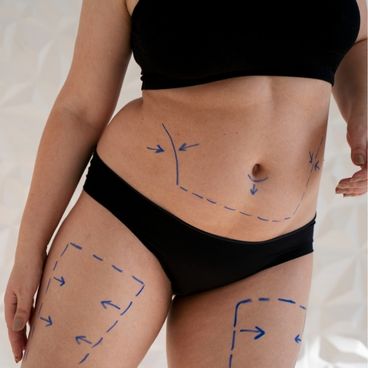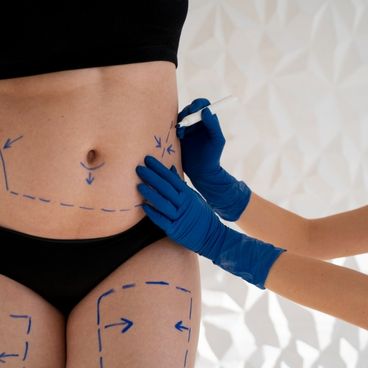The Ultimate Guide to Liposuction
Lipoplasty, popularly known as liposuction or suction-assisted lipectomy, is the surgical technique of removing fat deposits from certain parts of the body. It is not a solution for weight reduction but rather a system of shaping the contours of the body to remove stubborn fat that does not respond to diet and exercise. This comprehensive article covers the history of liposuction, types, procedure, risks, recovery, benefits, costs, and considerations.

Types of Liposuction
Tumescent Liposuction

This is the most common form, where a large quantity of saline solution, local anesthetic, and epinephrine is injected into the fat tissue before suctioning. Using this technique, blood loss and bruising are greatly minimized.
Ultrasound-Assisted Liposuction (UAL)
This technique involves ultrasonic vibrations that, through the heat they produce, allow fat cells to liquefy and become more easily aspirated. It's especially good for more fibrous areas, such as on the back or within the male breast tissue.
Laser-Assisted Liposuction (LAL)
This technique applies laser energy to the liquefaction of fat cells, which subsequently get aspirated. The heating effect of this method encourages the production of collagen, thus improving skin tightening.
Power-Assisted Liposuction (PAL)
This uses a vibrating cannula to break the fat cells, making the process easier and less physically taxing for the surgeon.
Vaser Liposuction
A form of UAL, it uses ultrasound energy in such a way that it destroys fat cells selectively, sparing other tissues for a smoother outcome and easier recovery.
3.100 £
Liposuction
The Liposuction Procedure
Consultation
A consultation with a board-certified plastic surgeon will be carried out to review goals, expectations, and past medical history. The surgeon will then examine the area to be treated and formulate an individualized plan.

 Contact Consultant/Doctor
Totally Free!
Contact Consultant/Doctor
Totally Free!
Preparation
Pre-operative instructions will be provided, which may include the avoidance of certain medications, fasting, and arranging for post-operative care. On the day of surgery, markings will be made on the areas that are targeted, and anesthesia will be administered.
Anesthesia
Extent of the procedure would indicate whether to use local anesthesia, sedation, or general anesthesia.
Incisions
Skin incisions are small and as inconspicuous as possible; they are made close to the site to be treated.
Injection of Tumescent Fluid
Injections of saline solution, lidocaine, and epinephrine are involved in tumescent liposuction to swell up the fatty tissue, thus minimizing blood loss.
Fat Removal
A cannula is inserted through the incisions to suction out the emulsified fat. The surgeon moves the cannula back and forth to break up the fat cells and remove them.
Closing Incisions
Incisions are either left open to drain excess fluid or closed with sutures.
Recovery
A compression garment is applied to reduce swelling and support the treated areas as they heal.
Benefits of Liposuction

Liposuction has the following aesthetic and psychological advantages:
- Improved Body Contour: With the sucking out of the stubborn fat, the shape and proportion of the body improve effectively.
- Increased Self-Esteem: The confidence and satisfaction of many patients regarding their appearance have really increased.
- Health Benefits: Fat deposit reduction aids in improved mobility by reducing the risk of health problems associated with obesity.
- Minimal Scarring: Because small incisions are made, minimal, often inconspicuous scarring may be expected.
Conclusion
Liposuction is the most effective cosmetic surgery to remove the localized deposits of fat, thereby improving body contours. Though carrying so many advantages, the decision needs to be made with realism, research, and responsibility for follow-up care. Consultation with an experienced plastic surgeon can only determine whether liposuction is the right option to achieve one's aesthetic needs.
Recovery Time
-
Immediately After SurgeryPain, bruising, and swelling are commonly experienced. Pain medicines and antibiotics may be prescribed to the patient.
-
Compression GarmentsThe use of compression garments for a few weeks supports the new contours and helps reduce swelling.
-
Restriction of ActivityLight activities are usually resumed after a few days, heavy exercises best avoided for 4-6 weeks.
-
Follow-Up VisitsRegular follow-ups with the surgeon to check on his progress and address any concerns.
-
Long-Term CareWeight maintenance within the normal range and a healthy lifestyle to preserve the result.
Frequently Asked Questions
Who is the right candidate for liposuction?
Which areas of the body can be treated with liposuction?
Is liposuction permanent?
Is liposuction painful?
Is liposuction a cellulite treatment?
Can liposuction be combined with other procedures?
What can be expected from the consultation for liposuction?
Average costs around the world
-
Türkiye
2,400.00 € -
Thailand
3,000.00 € -
United States
6,000.00 € -
United Kingdom
5,000.00 € -
Australia
5,000.00 €
-
Get Quality Treatments You can get an idea of the quality of the clinics & hospitals by reading verified customer reviews of their previous experience to make your decision with confidence
-
Gain Time Don't waste time checking recommendations from friends and other websites. Collect offers for your needs online and save time that you could spend with your loved ones.
-
Best-Matched Offers Get personalized offers by answering a few specific questions about your treatment needs. Quickly receive the best-matched offers from over 100 clinics and hospitals
-
Be Protected At every step of your journey, Wellcome preserves your experience. We'll have your back so you can get on with your work in peace.






